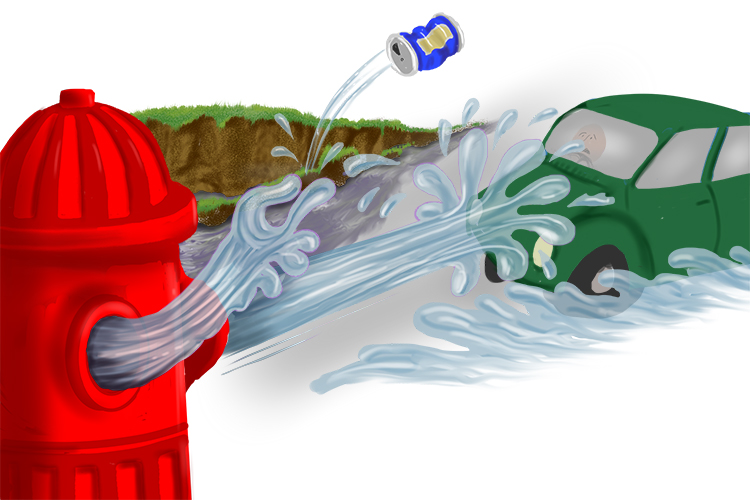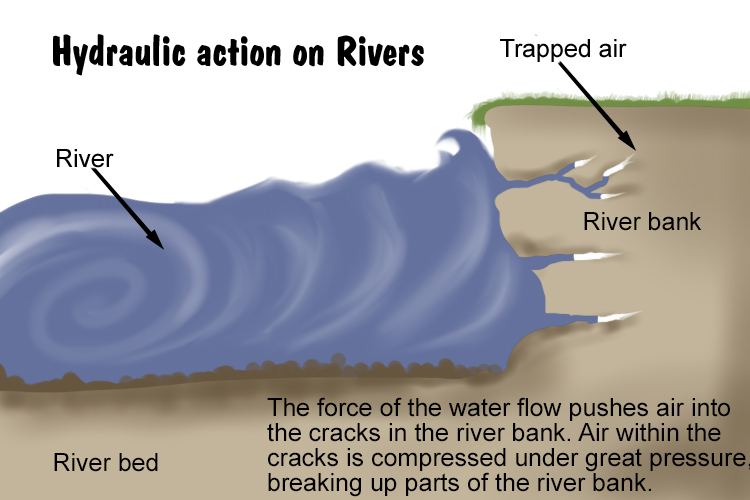Hydraulic action – fast-flowing water hits the bed and banks of the river and forces air into cracks in the bedrock. The repeated sudden changes in air pressure cause the cracks to break open further
To remember the meaning of the term Hydraulic Action, use the following mnemonic:
The water hydrant used a flicking action (hydraulic action) to move objects using water.


When fast-moving water strikes riverbanks and large rocks, air is forced into cracks. This puts great pressure on the surrounding rock, which can progressively crack, break, and splinter.
This is followed by sudden decompression, which can happen with explosive force. The released air simply blows away pieces of rock. Cracks are gradually widened so that subsequent waves compress more air, increasing the explosive force of its release.




